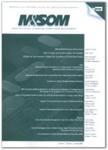-
作者:Fatehi, Soraya; Wagner, Michael R.
作者单位:University of Washington; University of Washington Seattle
摘要:Problem definition: We analyze a new model of crowdfunding recently introduced by Bolstr, Localstake, and Startwise. A platformacts as a matchmaker between a firm needing funds and a crowd of investors willing to provide capital. After the firm is funded, it pays back the investors using revenue-sharing contracts, with a prespecified investment multiple (investors will receive M >= 1 dollars for every dollar invested) and a revenue-sharing proportion, over an investment horizon of uncertain du...
-
作者:Dai, J. G.; Shi, Pengyi
作者单位:Cornell University; The Chinese University of Hong Kong, Shenzhen; Purdue University System; Purdue University
摘要:Problem definition: Inpatient beds are usually grouped into several wards, and each ward is assigned to serve patients from certain primary specialties. However, when a patient waits excessively long before a primary bed becomes available, hospital managers have the option to assign her to a nonprimary bed. although it is undesirable. Deciding when to use such overflow is difficult in real time and under uncertainty. Relevance: To aid the decision making, we model hospital inpatient flow as a ...
-
作者:Sun, Jiankun; Van Mieghem, Jan A.
作者单位:Northwestern University
摘要:Problem definition: How to dynamically replenish inventory from two supply sources or shipping modes with general lead times. The fast source is more expensive than the slow source. Academic/practical relevance: Dual sourcing provides supply chain flexibility to mitigate demand and supply risk. Despite its relevance in practice, characterizing the optimal dual sourcing policy is extremely challenging, and the optimal stochastic policy for nonconsecutive lead times has been unknown for over 50 ...
-
作者:Sun, Jiankun; Van Mieghem, Jan A.
-
作者:Montoya, Ricardo; Gonzalez, Carlos
作者单位:Universidad de Chile
摘要:We propose a hidden Markov model (HMM) approach to identifying on-shelf out-of-stock (OOS) by detecting changes in sales patterns resulting from unobserved states of the shelf. We calibrate our model using point-of-sale (POS) data from a big-box retailer. We validate our approach using visual inspections that monitor the state of the shelf and compare them to the HMM's predictions. We test the proposed approach on 14 products and 10 stores. We specify our model using a hierarchical Bayes appro...
